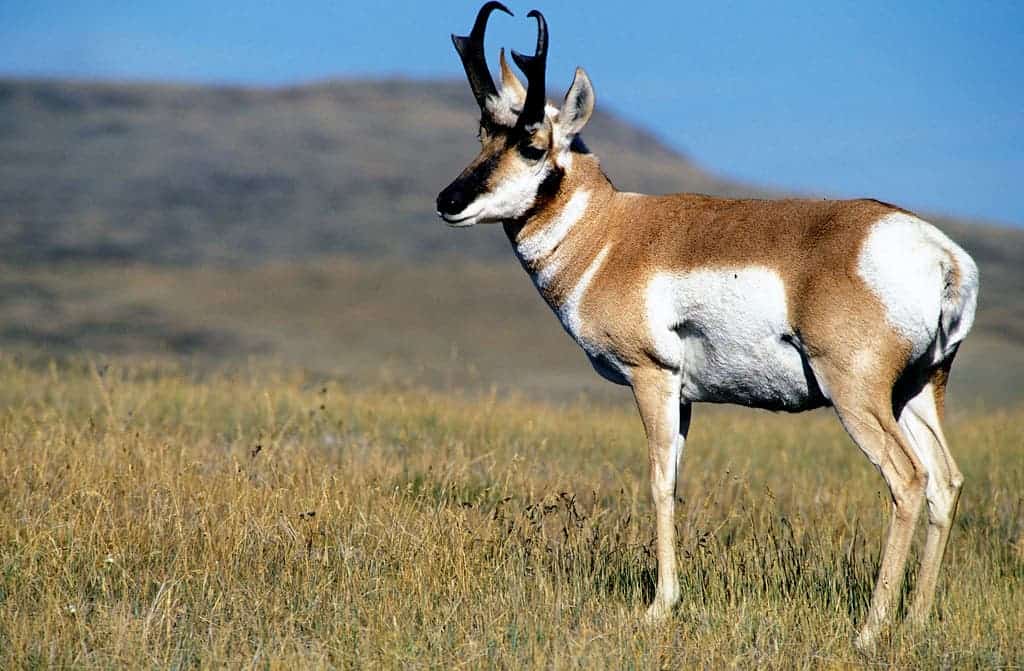As visitors are quarantining at home, the Death Valley national park is teeming with life. It’s far from an exception — similar reports are coming from all parts of the world. Animals in parks throughout the world are venturing into areas they’ve never been seen in before.
They’re loving it.

Image credits USFWS Mountain-Prairie / Flickr.
Pronghorn antelope have been seen in the lowlands of Death Valley national park, close to the once-crowded visitor center. This is the first time in the caretakers’ lifetimes that the animals are spotted in the area, according to one spokesperson.
No people, no problem
“This is something we haven’t seen in our lifetimes,” Kati Schmidt, a spokesperson for the National Parks Conservation Association, told The Guardian. “We’ve known they’re in some of the higher elevation areas of Death Valley but as far as we’re aware they’ve never been documented this low in the park, near park headquarters.”
Caretakers report seeing pronghorn antelope walking through the park’s lowlands for the first time in recent memory, despite temperatures reaching 110F (43.3C). The animals were spotted on a hillside not far from the visitor center, an area they usually avoid entirely due to high human traffic.
Other natural and national parks are reporting similar trends.
In Yosemite National Park, rangers reported seeing “bobcats, bears, and coyotes” going about their day through the tents and administrative buildings that quarantined humans have left vacant, Insider explains.
The Guardian writes that around 4 million visitors traveled to Yosemite last year, and the area can — and does — get clogged with heavy traffic during certain parts of the year.
Rocky Mountain, in Colorado, and Yellowstone, in Wyoming, are seeing similar wildlife behavior.
As surprising as such sightings may be for us, it pays to keep in mind that the animals themselves have likely never seen the parks as they are now — this may very well be the first time in their lives that there are no humans around. It does help put the scope of our impact on nature into perspective.
Still, the animals are taking advantage of all the free space. Bears, in particular, seem keen to explore the areas that humans have abandoned.
“The bear population has quadrupled,” Dane Peterson, a worker at the Ahwahnee Hotel, near Yosemite, told the Los Angeles Times. “It’s not like they usually aren’t here. It’s that they usually hang back at the edges or move in the shadows.”
In Kruger National Park, South Africa, lions have been spotted napping on the road, in plain sight. The animals typically sleep in the bushes but they are “very smart and now they are enjoying the freedom of the park without us,” according to Kruger spokesman Isaac Phaala.
With quarantines coming to an end, it remains to be seen how this situation evolves. It’s overwhelmingly likely that the animals will shy away as the number of human visitors bounces back, but they might need some time to re-adapt to our presence.
So if you’re planning on visiting a national park, be mindful of how this period might affect the behavior of wildlife. Baby animals who were born during this spring might have a particularly hard time adjusting to the presence of humans. On the upside, at least, you might have more chances of snapping some cool photos — but do try to stay safe. Lindsay Rosa, a conservation scientist with Defenders of Wildlife told The Guardian that people should take particular care with amphibians, says Rosa, many of which are beginning to migrate to their breeding grounds, so watch out for them on roads.
Speaking of safety, also keep in mind that the pandemic is still going strong, so follow all the health precautions we’ve seen all along: wear a mask, wash your hands, keep your distance whenever possible.
“Individuals who have lived in the national park area will likely readjust pretty quickly to the return of recreators after quarantine,” said Lindsay Rosa, a conservation scientist with Defenders of Wildlife. “But newcomers, particularly juveniles born this spring, may take a bit longer to learn since they haven’t yet had the opportunity to encounter many humans.”


